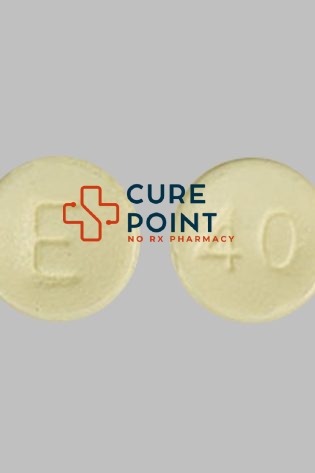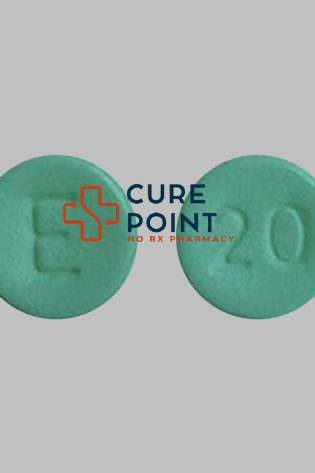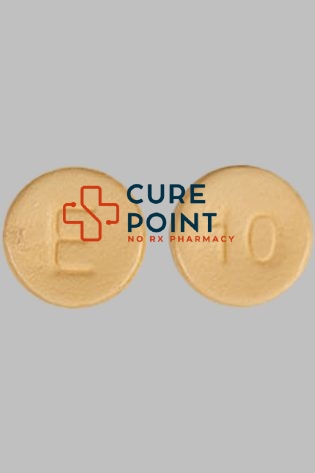- Your cart is empty
- Continue Shopping
Opana ER 30mg
$350.00 – $3,600.00
Product Description
Oxymorphone can be used to alleviate moderate to severe pain. It’s part of a group of medications known by the name opioid analgesics. It is a brain chemical that works to alter how your body responds to pain.
How to use it?
Take a look at the medication guide supplied by your pharmacist prior to when you start taking oxymorphone. You should also read it every time you receive refills. If you have questions, you should ask your doctor or pharmacist.
Inject this medication with or without food (at least one hour prior to or two hours following eating) according to your physician, typically between 4 and 6 hours. If you experience nausea, consult your physician or pharmacist for suggestions on methods to reduce the nausea (such as lying on your back for a period of 1 to 2 hours with the least amount of head movement possible).
The dosage will depend on the medical conditions you have and your response to treatment. Do not increase the dosage or use the drug more often or longer than the recommended duration because your potential for adverse reactions could increase. Make sure to stop taking the medication only when directed to do so.
It is best when they are taken at the first sign of pain. If you hold off until the pain gets worse, the medication might not be effective.
If you suffer from ongoing discomfort (such as from cancer), the doctor could suggest that you use long-acting opioids. In this case, the medication can be used to treat abrupt (breakthrough) pain, but only when required. Other pain relief medications (such as acetaminophen and ibuprofen) can be prescribed. Talk to your pharmacist or doctor regarding the use of oxymorphone in conjunction with other medications.
The abrupt stopping of this medication could result in withdrawal, particularly if used for a long period of time or in large doses. To avoid withdrawal, your doctor might lower your dose gradually. Inform your pharmacist or doctor immediately if you notice any withdrawal symptoms, such as anxiety, mood or mental changes (including anxiety, insomnia, and thinking of taking your own life), watery eyes, nausea, runny nose sweating, diarrhoea, muscular discomfort, and sudden shifts in your behaviour.
If this medication is taken for a long period of time, it may not perform in the same way. Consult your physician when this medication ceases to work properly.
While it is beneficial to many, however, it can also result in dependence. The risk of developing addiction is greater when you suffer from an addiction disorder (such as excessive use of alcohol or drugs). Follow the exact dosage directed to decrease the chance of developing addiction. Consult your physician or pharmacist for more information.
Tell your doctor if your pain does not get better or if it gets worse.
Side effects
Frequent vomiting, nausea, constipation, sweating, dizziness, lightheadedness, or drowsiness can be experienced. In the event that any one of these symptoms persists or becomes worse, inform your physician or pharmacist immediately.
To prevent constipation, consume the right amount of dietary fibre, drink plenty of water, and work out. It may be necessary to use a laxative. Ask your pharmacist what kind of laxative is appropriate for you.
To lessen the chance of lightheadedness and dizziness, make sure to get up slowly after rising from a lying or sitting position.
Be aware that your physician has prescribed this medication because he or she has determined that the benefits to you are greater than the potential risk of side effects. The majority of patients who use this medication do not experience any serious adverse side effects.
Contact your physician immediately in case you experience any serious adverse reactions, for example, breathing being interrupted during the night (sleep apnea) and mental or mood fluctuations (such as confusion, agitation, and hallucinations). stomach/abdominal pain visual changes, a slow or fast heartbeat, or difficulty urinating—symptoms of the adrenal glands that aren’t functioning properly (such as an increase in appetite, excessive tiredness, and losing weight).
Get medical help right away if you have any very serious side effects, including slow or shallow breathing, fainting, seizures, or severe drowsiness or difficulty waking up.
An extremely serious reaction to this medication is not common. However, you should seek medical assistance immediately if you observe any signs of an allergic reaction, such as swelling, itching, or rash (especially of the tongue, face, or throat) and severe dizziness. difficulty breathing.
This isn’t an exhaustive list of the possible adverse reactions. If you notice any other side effects that are not listed, consult your physician or pharmacist.
In the US, contact your physician to seek medical advice on adverse effects. You may report side effects to the FDA at 1-800-FDA-1088 or at www.fda.gov/medwatch.
In Canada In Canada, contact your physician to get medical advice on adverse effects. You can report any adverse reactions to Health Canada at 1-866-234-2345.
Precautions
Before you take oxymorphone, inform your physician or pharmacist if you are allergic to it, to any other opioid pain medicines (such as morphine, codeine, or oxycodone), or to any other substances. The product could have inactive ingredients, which can trigger allergic reactions or other issues. Ask your doctor for more information.
Before taking this medication, consult your doctor or pharmacist about your medical history, focusing on conditions that affect the brain (such as head injuries, seizures, tumours, and head injuries) or breathing problems (such as sleep apnea, asthma, chronic obstructive pulmonary disease (COPD), gallbladder diseases, liver disease, kidney disease, mental or mood issues (such as depression, confusion, and suicidal thoughts), as well as a family or personal background of a substance-use disorder (such as overuse or dependency to alcohol or drugs). stomach/intestinal disorders (such as constipation, blockage, or diarrhoea caused by infection or paralytic ileus), diseases in the pancreas (pancreatitis), and difficulty urinating (such as a result of the prostate being enlarged).
The drug can cause you to become dizzy or sleepy. Cannabis or alcohol (cannabis) may cause you to be more drowsy or dizzy. Avoid driving, using machines, or doing anything that requires alertness until you’re able to safely do so. Beware of alcohol-based drinks. Discuss with your doctor when you use cannabis (cannabis).
Before you undergo surgery, inform your dentist or doctor about all the medications you’re using (including prescription medications, non-prescription medicines, and herbs).
Adults who are older might be more sensitive to the negative effects of this medication, particularly dizziness, confusion, slow or slow breathing, and drowsiness.
During pregnancy, this drug should only be taken when absolutely necessary. It can cause harm to a baby who is not yet born. Discuss the benefits and risks with your physician. (See the section on warnings.) It is not known whether this drug is absorbed into breast milk. But similar drugs do enter breast milk and could cause adverse effects for the nursing infant. Inform your doctor immediately if your child experiences uncharacteristic sleepiness, difficulty eating, or trouble breathing. Talk to your doctor before breastfeeding.
Storage
Storage at room temperature, free of moisture and light. Don’t store it in the bathroom. Be sure to keep all medications away from pets and children. Also, check out the warning section.
Do not flush medicines down the drain or pour them down the drain unless you are instructed to do this. Be sure to dispose of this medication once it is no longer in use or not required anymore. For more information, consult the Medication Guide or speak with your physician or your local waste disposal service.
Drug Interactions
Drug interactions can alter the way your medication works or increase the risk of dangerous adverse consequences. This document is not a comprehensive list of all interactions that could occur between drugs. Keep a list of all the products you use (including prescription and nonprescription drugs and herbal products) and share it with your doctor and pharmacist. Don’t start, stop, or alter the dosage of any medicine without the permission of your doctor.
Some of the products that can be incompatible with this drug are some pain medicines (mixed opioid antagonists and opioid agonists like pentazocine, nalbuphine, and butorphanol) or naltrexone.
The risk of serious side effects (such as slow or shallow breathing or severe drowsiness or dizziness) may be increased if this medication is taken with other products that may also cause drowsiness or breathing problems. Talk to your doctor or pharmacist if you’re using other medications, such as other opioid cough relievers or painkillers (such as hydrocodone, codeine), alcohol, marijuana (cannabis), or other medications for anxiety or sleep (such as lorazepam, lorazolam, and zolpidem), muscle relaxants (such as cyclobenzaprine, carisoprodol), or antihistamines (such as diphenhydramine, cetirizine).
Be sure to read the labels on your medications (such as cough and cold products), as they could contain ingredients that can cause sleepiness. Consult your doctor about using the products safely.
This medication can interfere with some tests performed in laboratories (including levels of amylase and lipase), which could result in false results on tests. Be sure that lab personnel and your medical professionals are aware of this medication.
Overdose
If a person has taken an overdose and suffers from severe symptoms like vomiting or breathing difficulties, give the person naloxone. If it is, then call 911. If the person is still awake and does not have any signs, contact the poison control centre now. US residents can contact their local poison control line at 1-800-222-1222. Canadian residents can contact the provincial poison control center. The signs of an overdose could include a slow or shallow breathing or a slow or incoma-like heartbeat.
More
Missed Doses:
If you’re taking this medication regularly and miss a dose, make sure you take it as soon as you remember. If it’s nearing the time of your next dose, do not take any missed doses. The next dose should be taken at the normal time. Do not take a double dose to make up the time.
Notes:
Don’t give this medication to others. Sharing it is against the law.
This medication was specifically prescribed for your medical condition. Do not take it to treat another issue unless your doctor has instructed you to do so. An alternative medication could be needed in such a situation.
Consult your physician or pharmacist if it is necessary to be able to get naloxone in order to treat an overdose of opioids. Instruct your family or household members about the symptoms of an overdose and how to deal with them.
Additional Information
| Pills | 10, 30, 60, 100, 200 |
|---|





Reviews
There are no reviews yet.